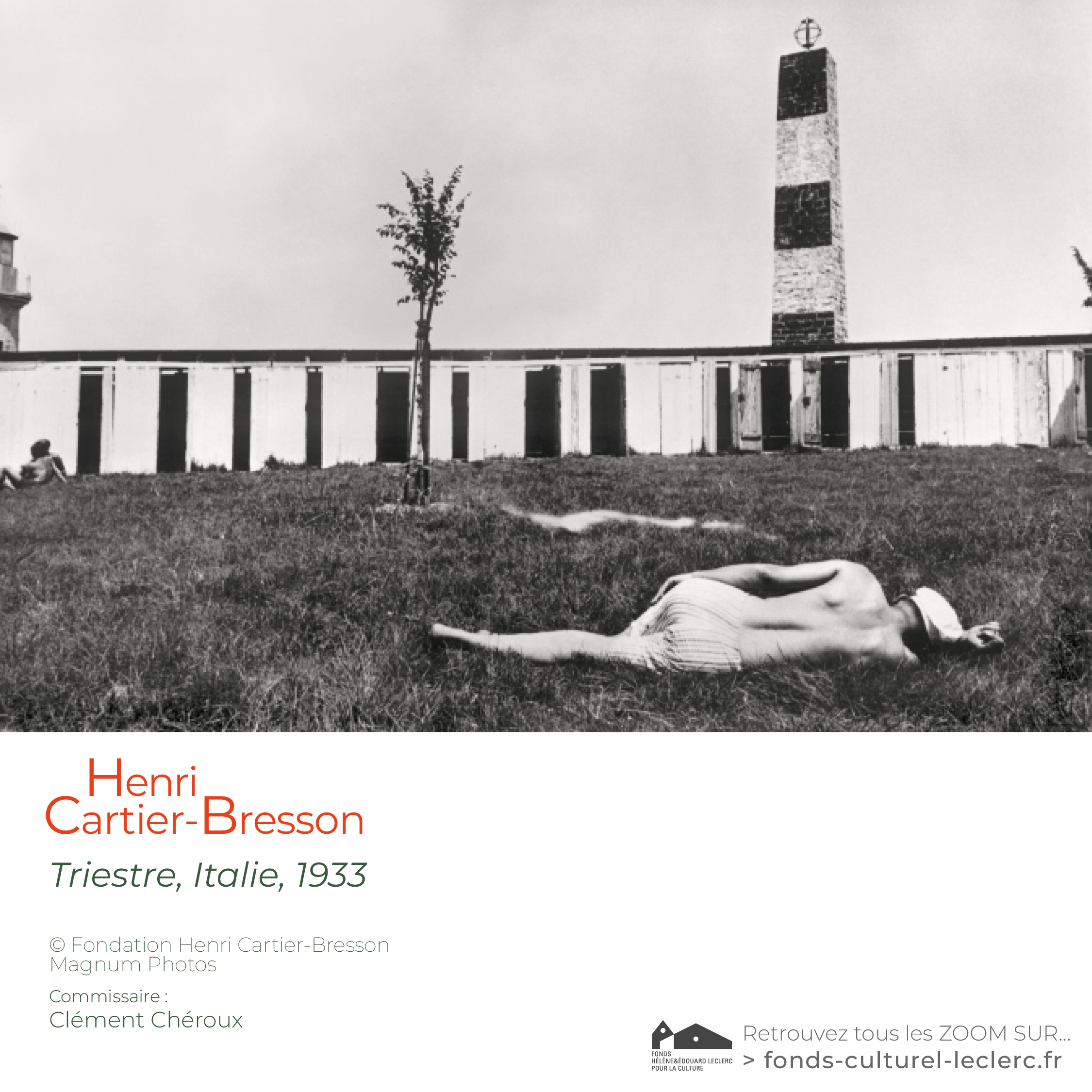- Publié le 19/07/2024
- Par Équipe Médiation
[ZOOM SUR] l'exposition « Henri Cartier-Bresson »
- Focus sur la section 1 de l'exposition « Henri Cartier-Bresson » : Le sel du surréalisme

Triestre, Italie, 1933 © Henri Cartier-Bresson - © Magnum Photos
Le sel du surréalisme
Durant l’été 1932, Cartier‑Bresson voyage en Italie. À Milan, Florence, Sienne, Trieste ou Venise, il réalise quelques-unes des images les plus enchantées de ses débuts. Parfaitement construite selon un motif en croix horizontal alternant avec subtilité les noirs et les blancs, l’image témoigne de la qualité de composition à laquelle Cartier‑Bresson est arrivé en quelques années de pratique seulement. Elle montre aussi la trace profonde que la fréquentation des surréalistes a laissée sur sa façon de regarder le monde. L’alignement des portes dont certaines sont entrouvertes et d’autres fermées, le personnage à moitié nu couché dans l’herbe, l’énigmatique cheminée surmontée d’une sphère armillaire, tout dans cette image rappelle l’atmosphère angoissante des tableaux de Giorgio De Chirico, que Cartier‑Bresson avait découverts à la fin des années 1920 dans une galerie parisienne. Le petit filet de fumée qui surplombe le personnage au premier plan, telle une âme s’échappant du corps, renforce encore le caractère d’inquiétante étrangeté de cette image.
The salt of surrealism
In summer 1932, Cartier‑Bresson travelled through Italy. In Milan, Florence, Sienna, Trieste and Venice he took some of the most charming photographs of the beginning of his career. Perfectly structured following the horizontal motif of a cross delicately alternating black and white areas, the image shows the quality of composition Cartier‑Bresson had reached in just a few years of practice. It also confirms the considerable influence that keeping company with the surrealists had on the way he looked at the world. The row of doors, some half‑opened and some closed, the partly naked figure lying on the grass, the enigmatic chimney capped with an armillary sphere, everything in this image calls to mind the anxiety-inducing atmosphere of Giorgio De Chirico’s paintings that Cartier‑Bresson had discovered at the end of the 1920s in a Parisian gallery. The wisp of smoke hanging over the figure in the foreground, like the soul escaping the body, reinforces again the nature of the alarming strangeness of this image.
Pour en savoir plus, rendez-vous dans l'exposition Henri Cartier-Bresson jusqu'au 05 janvier 2025, au Fonds Hélène & Édouard Leclerc.
Commissariat : Clément Chéroux.



S'ABONNER AUX NOUVELLES DU FONDS
FHEL
POUR LA CULTURE
AUX CAPUCINS
29800 LANDERNEAU (FRANCE)
02 29 62 47 78








